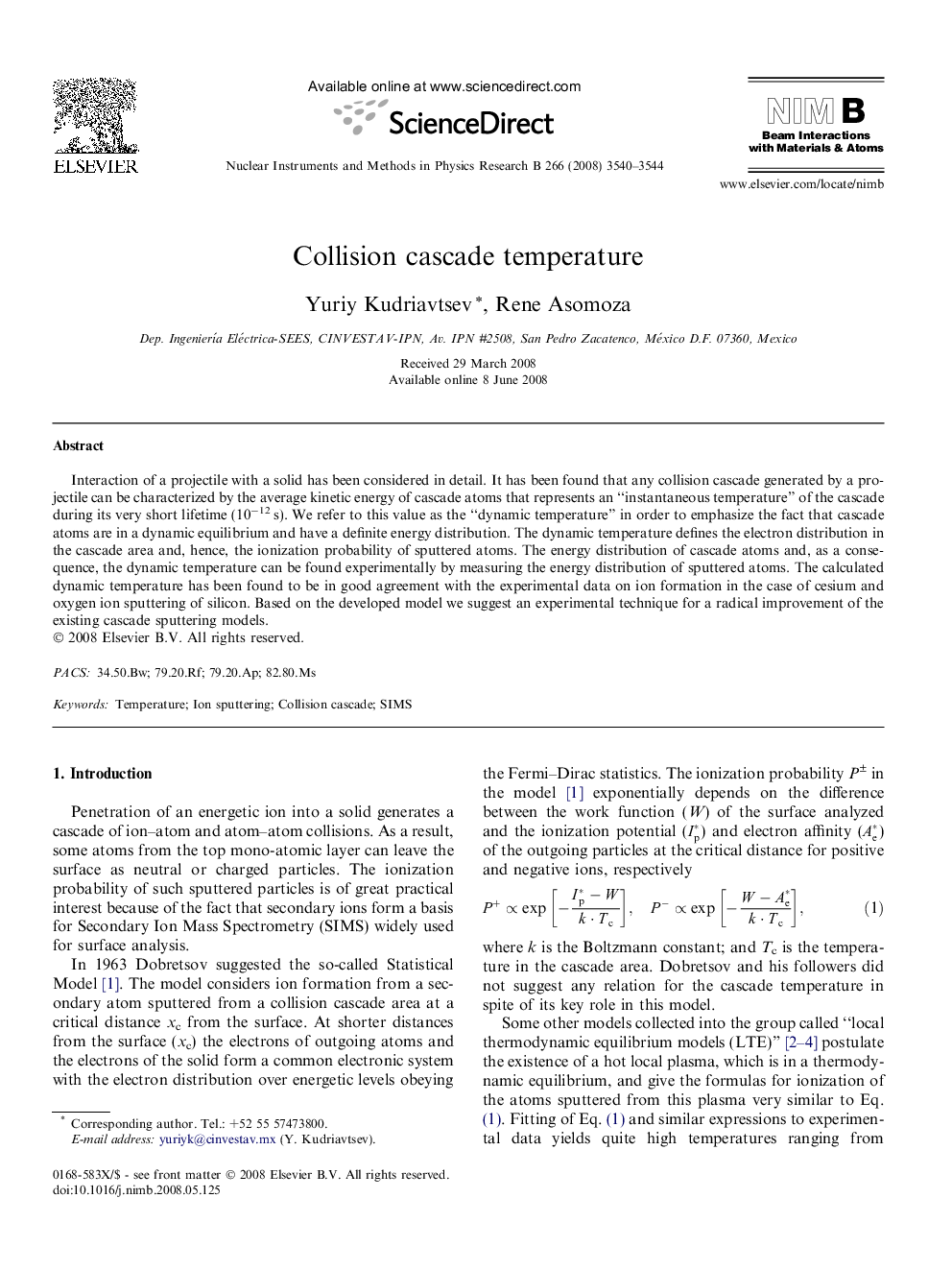| Article ID | Journal | Published Year | Pages | File Type |
|---|---|---|---|---|
| 1685734 | Nuclear Instruments and Methods in Physics Research Section B: Beam Interactions with Materials and Atoms | 2008 | 5 Pages |
Abstract
Interaction of a projectile with a solid has been considered in detail. It has been found that any collision cascade generated by a projectile can be characterized by the average kinetic energy of cascade atoms that represents an “instantaneous temperature” of the cascade during its very short lifetime (10â12Â s). We refer to this value as the “dynamic temperature” in order to emphasize the fact that cascade atoms are in a dynamic equilibrium and have a definite energy distribution. The dynamic temperature defines the electron distribution in the cascade area and, hence, the ionization probability of sputtered atoms. The energy distribution of cascade atoms and, as a consequence, the dynamic temperature can be found experimentally by measuring the energy distribution of sputtered atoms. The calculated dynamic temperature has been found to be in good agreement with the experimental data on ion formation in the case of cesium and oxygen ion sputtering of silicon. Based on the developed model we suggest an experimental technique for a radical improvement of the existing cascade sputtering models.
Related Topics
Physical Sciences and Engineering
Materials Science
Surfaces, Coatings and Films
Authors
Yuriy Kudriavtsev, Rene Asomoza,
